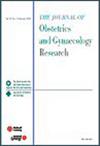The predictive value of triglyceride-glucose index, lipid accumulation product and lipid ratio on metabolic syndrome in polycystic ovary syndrome patients
Abstract
Objectives
To identify reliable indicators to predict the occurrence of metabolic syndrome (MetS) and to provide an effective way to prevent it in polycystic ovary syndrome (PCOS), we explored the relationships between triglyceride-glucose index (Ty-G), lipid accumulation product (LAP), lipid accumulation product ratio, and MetS.
Methods
We detected the relationship between the Ty-G index, LAP, lipid ratio, and incidence of MetS. In addition, we classified the Ty-G index and LAP into tertiles to determine the efficacy of these indicators in predicting the risk of MetS. Finally, the effects of the Ty-G index, LAP, and lipid ratio on the prediction of MetS were evaluated with the receiver operating characteristic (ROC) curve.
Results
Our results indicate that the incidence of MetS was 38% in 134 patients with PCOS, and that the Ty-G index, LAP, and lipid ratio were independent risk factors for MetS. In addition, the incidence of MetS significantly increased with Ty-G index and LAP. The ROC curve showed that the Ty-G index, LAP, and lipid ratio all showed good performance in predicting the occurrence of MetS in PCOS patients, but the Ty-G index had the highest predictive value, with a cut-off value of 8.70.
Conclusions
Our study revealed that the Ty-G index plays an important role in predicting the occurrence of MetS in PCOS patients. In addition, monitoring blood glucose and lipid levels is an effective approach for preventing MetS in PCOS patients clinically regardless of age, and weight management should be strictly implemented in overweight and obese patients to prevent MetS.

 求助内容:
求助内容: 应助结果提醒方式:
应助结果提醒方式:


